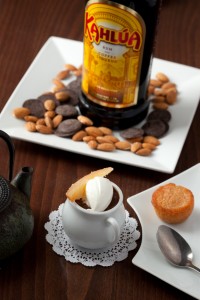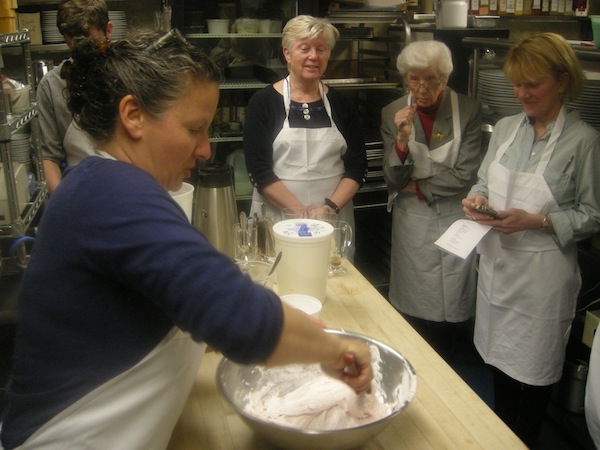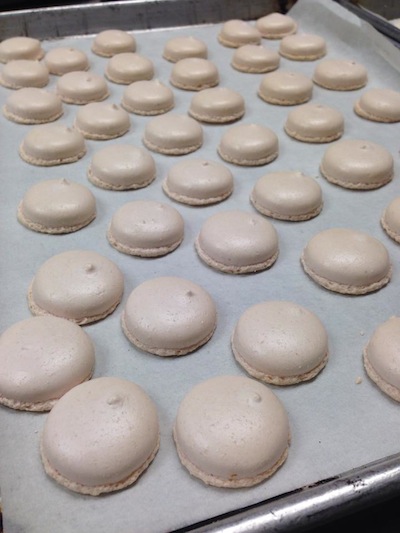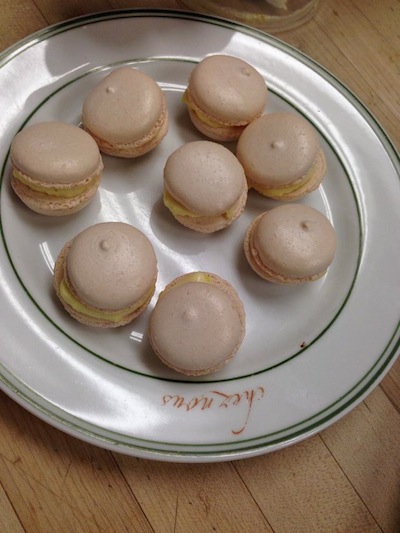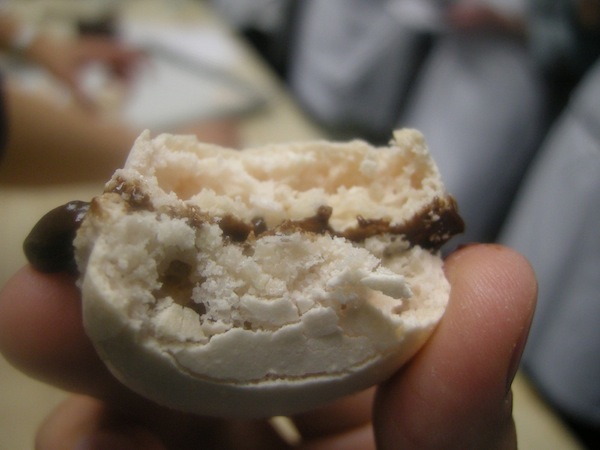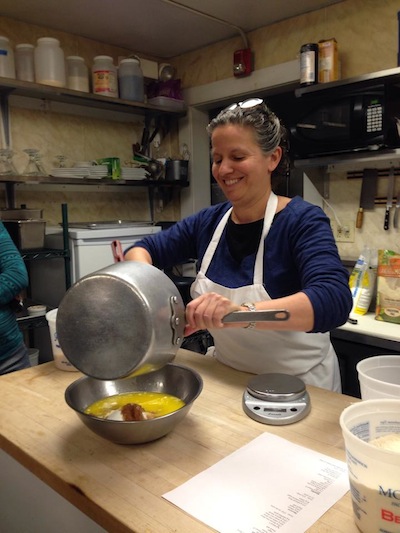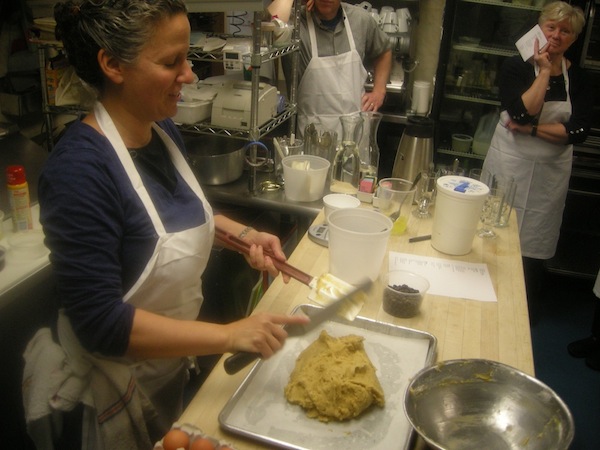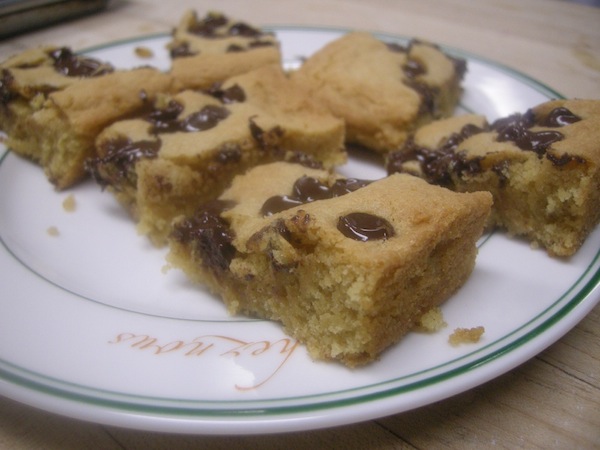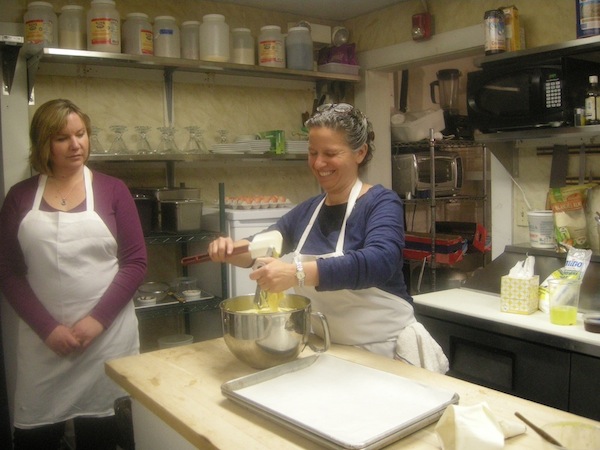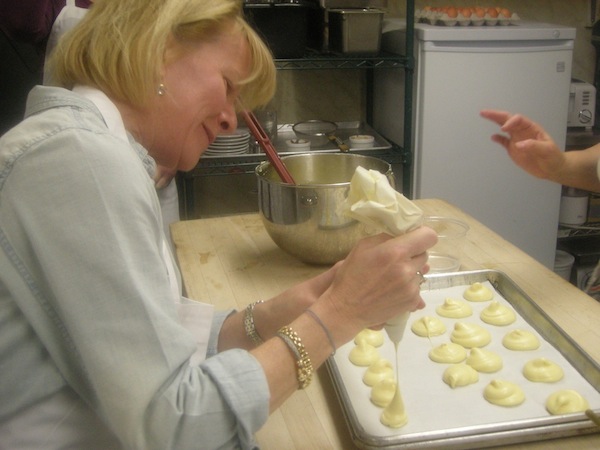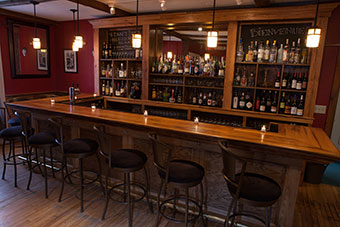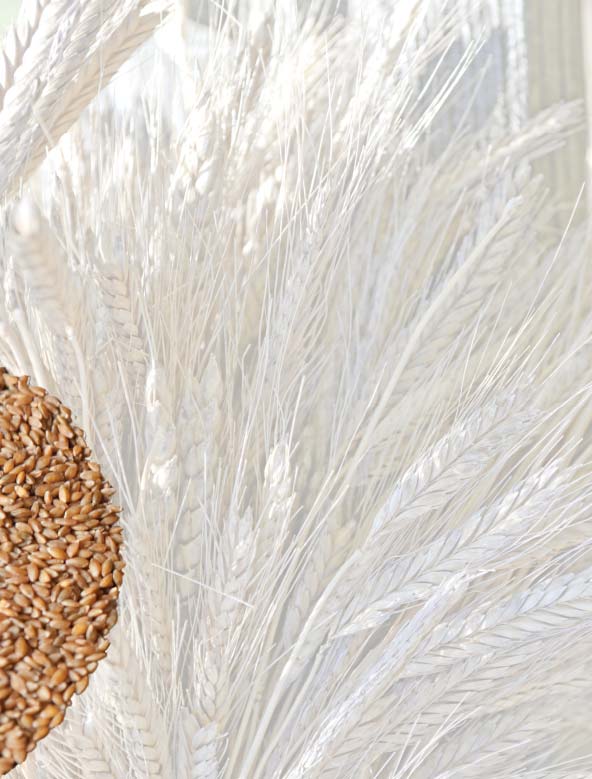
By Rachel Portnoy Recipe by Franck Tessier
Chefs and owners of Chez Nous Bistro, Lee
What is einkorn? Why should I eat it? How can I get it? How do I cook with it? These are questions that we are answering over and over again.
Imagine a time when concepts such as slow food, seasonal cooking and farm-to-table didn’t exist. That’s just the way all food was. Can you remember a time before food was sold pre-packaged in dubious plastics, sealed off and cut off from any connection—physical or spiritual—to the nourishing earth that provided it?
I guess it’s this yearning for something real—something nourishing not just physically, but spiritually—that is at the heart of our curiosity about the ancient grain einkorn.
And it is, of course, much more than that: Wheat has been at the heart of Western culinary culture for millennia. The cultivation of wheat was arguably one major factor in early humans shifting from nomadic existence to a domesticated civilization. (Whether the grain was first beloved for brewing alcohol or for baking bread is where the argument lies.) We love products made with wheat; we’ve been raised with them and they are delicious.

li Rogosa holding a sheaf of einkorn.
But modern wheat has been transformed into something unrecognizable to its ancestors. It’s been modified into the category of modern foods that depend on intense agricultural interventions in order to survive, and is largely indigestible to many people now. And, although I never had thought of this until I tasted bread and pastries made with einkorn, modern wheat doesn’t have much flavor anyway.
Enter into the picture local farmer, seed-saver and anthropologist Eli Rogosa, a leading authority on the history and cultivation of ancient grains. Eli grows einkorn and other rare and ancient grains, selecting for strength and adaptability to our Berkshire climate, and educates people about alternatives to modern wheat.
Is einkorn wheat? Genetically speaking, no. All modern wheat evolved from wild emmer, though now it has been so intensively crossbred that, under a microscope, its structure appears far more complicated than that of emmer. Einkorn comes from a distinct species, different from wheat, a wild grass referred to as wild einkorn. Eli calls einkorn a “neolithic grain.”
Our bodies literally evolved with these ancient grains as nourishment, and our bodies still find its simple, unhybridized genetic structure easily digestible. The way that it grows makes its nutrition easily accessible, and its nutty, delicate flavor makes it addictive.
So how does einkorn differ from quinoa—another highprotein ancient grain that has gained popularity? Both grains are delicious alternatives to wheat, high in protein and other minerals, but einkorn has gluten and quinoa doesn’t. Einkorn enables us to produce foods that resemble the things we were raised on and still love: wonderful and sustaining breads and pastries, pastas and pizza bases. You have to really play with any of the gluten-free flours or grains to achieve this.
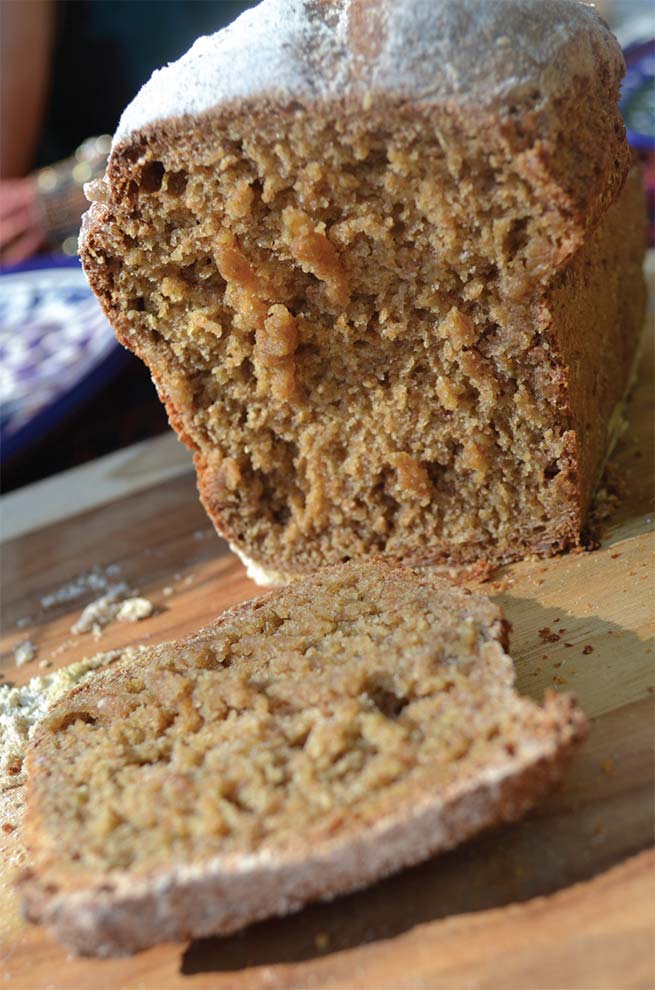
Einkorn sourdough
Another advantage to einkorn is that it doesn’t spike your blood sugar the way that wheat and many common gluten-free flours do (rice, tapioca, etc.). Unless you bake with teff flour, amaranth, chickpea, quinoa or bean flours, you are using something with a high glycemic index that can encourage sugar cravings and overeating. The healthier glutenfree flours are more complicated to work with than the rice flours, making it hard to achieve something resembling our favorite wheat treats.
Einkorn, while not gluten-free, produces a natural gluten that is considered “gluten-safe” for many people, and therefore is a fantastic alternative for those limiting their consumption of modern wheat.
So many people are curious about einkorn. Maybe they read about it in the book Wheat Belly, by William Davis MD or maybe they’re hungry for new and delicious “real foods.” This wild plant has survived millennia, and though it (like all wheats, in fact) is not native to North America, it adapts brilliantly to our climate: high yielding, resilient in heavy rains, not susceptible to diseases and mildews.
Under Eli’s careful cultivation, selecting the strongest, highestyielding plants and saving their seeds, harvesting by hand with a sickle and meticulously hulling and preparing the grain, we are the lucky benefactors of einkorn, and millennia of farmers’ conscientious and determined work under this principle. It’s about survival, ultimately: The strongest grains, the best producers, are the ones with which humanity will thrive, inspiring us with their resiliency and integrating us with our history and our earth.
We have a seasonal menu at our restaurant, giving us lots of opportunities to develop new recipes using einkorn. The flour is incredible for baking, but we love working with the whole grain, as well. You can use it in a grain salad, as a pasta or barley substitute in a soup, or prepared—as we often do—in the style of a risotto. Though the key ingredient to classic risotto is rice, many cooks have been using the same technique with different grains (I’ve even seen recipes for finely diced potato “risottos”).
Einkorn’s wonderful flavor and texture, as well as its sustaining nutrition, makes it an obvious choice for a risotto-style kind of treatment, endlessly adaptable to seasonal variations.
Just start with einkorn grain that is soaked overnight, and you will find that it cooks up in the same 45 minutes as a traditional risotto.
ChezNousBistro.com
Rachel Portnoy is a pastry chef and co-owner of Chez Nous Bistro in Lee, Massachusetts, with her husband, Franck Tessier. She arrived in Lee 11 years ago and opened Cakewalk Bakery, which she sold in 2005. She now spends her time running the restaurant and developing recipes for delicious desserts that don’t include modern wheat.
RECIPE
Einkorn “Risotto” with Caramelized Garlic & Oven-Roasted
Tomatoes Topped with Pan-Seared Scallops and Pesto
